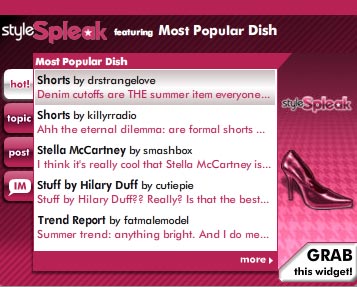We give developers the opportunity to tell us journalists why we should sit up and pay attention to the sites and devices they are working on. Showing us its wares today is the aptly named HelpAReporter.com – set-up by Peter Shankman.
1) Who are you and what’s it all about?
HelpAReporter was designed simply to help journalists find the sources they need without a lot of hassle. I started the site for two simple reasons:
a) I think that other services are more about making money and less about actually getting reporters what they need. “I need someone who understands 18th century art” turns into 600 emails that say “I once saw a piece of 18th century art as I WAS WRITING MY BOOK ON HOW TO SELL THINGS ON THE INTERNET DO YOU WANT A COPY TO REVIEW?!”
b) I think that in the end, reporters don’t WANT to hate publicists, and publicists don’t WANT to come across as idiots. I’d like to help prove that.
2) Why would this be useful to a journalist?
Journalists start every single day behind the eight-ball. They need sources. Sadly, most publicists send emails that do nothing more than waste their time. I’m trying to change that – journalists simply submit their queries at www.helpareporter.com/press, and it goes out to my list – now over 10,000 sources big. They can put in their email or go anonymously if they choose.
I make all my sources promise to stay on topic, and not waste a journalist’s time. So far, they’re all agreeing! That rocks.
3) Is this it, or is there more to come?
I never say never – I didn’t expect this to be any bigger than the original Facebook group I started. Now, 10k members and growing? Who knows how big it’ll go?
4) Why are you doing this?
Here’s why… The site takes probably 15 minutes a day to administer. I simply take the emails, put them into a text document, at a few times a day, send them out through the email distribution list.
Too many people (in this industry and well as in the world) simply live on a ‘ME, ME, ME’ mentality. Why not do something good for others? I’ve been very fortunate – The companies I’ve started have all done very well. Why shouldn’t I give something back to account for all that luck? The fact that more people don’t think like that kinda saddens me – but on the plus side, it means that I can shine without doing that much extra. So it’s a nice balance.
5) What does it cost to use it?
The site is 100% free for both journalists and sources.
6) How will you make it pay?
Right now, I don’t need to. Perhaps I will one day? A text ad? Who knows. Right now, if people really like it, I invite them to donate to Best Friends Animal Sanctuary in California. Perhaps one day I’ll sell it, or start some small advertising on it. For now, it’s totally not necessary.
